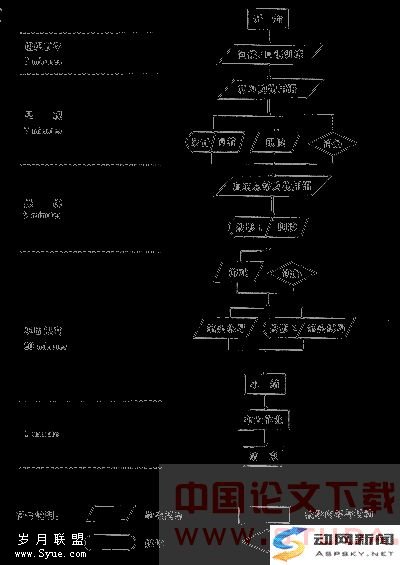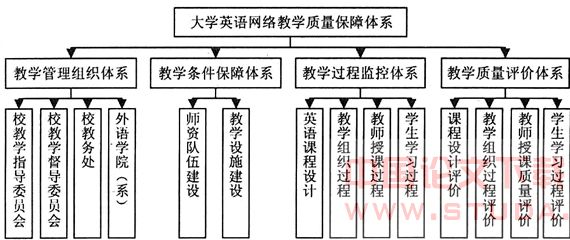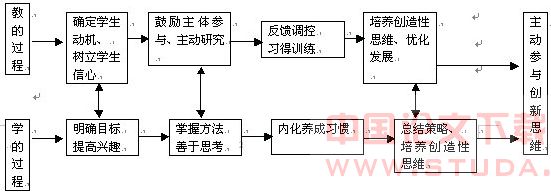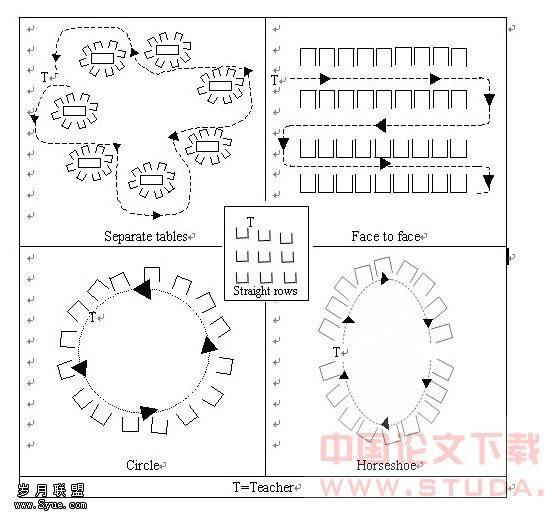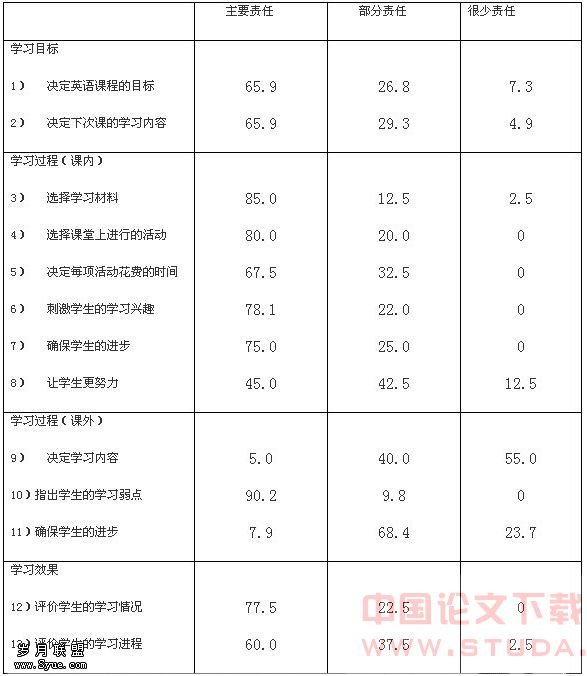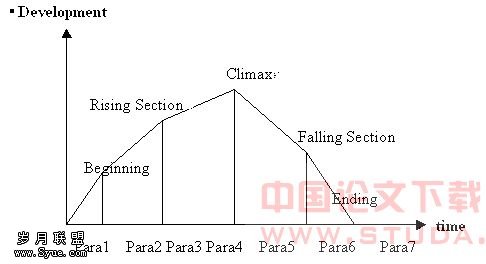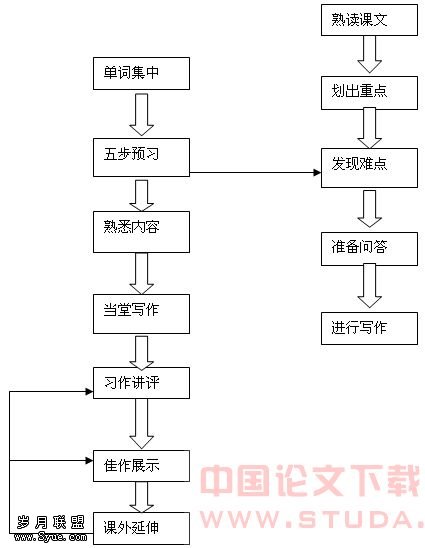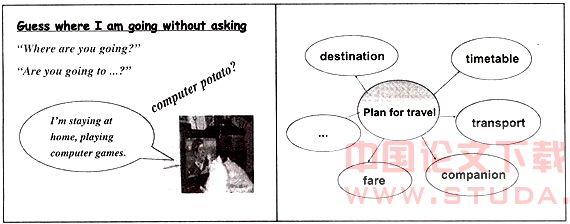英语听力教学论文范文
[Abstract] Modern language teaching theory highly emphasizes the effect of “ing” on the learning and the use of language. The teaching of English listening isn’t only a teaching of language, also a training of ability. In the four skills: listening, speaking, reading and writing, listening is the basic, and the most important skill. It isn’t only the main way of acquiring language information, but the base of improving other skills. Many Chinese students regard the listening test as the most difficult part of a whole test. In this article, we start with the conditions of the middle school listening teaching, point out some problems and design some activities in the beginning of the class. Then we focus on some activities of teaching English listening and insist that the activities should be emphasized on the process of listening, rather than the result of listening. How can students improve their listening and get good mark, become the subject that junior middle school teachers care. During the English teaching, it is important for teachers to master the skill of designing the listening activities
[Key Word] listening; middle school; English teaching; barrier; teaching activity designing;
【摘 要】随着时代的和进步,作为一种国际通用语在贸易往来和文化交流过程中发挥着不可替代的作用。掌握好英语这种交际工具,对学生将来的发展有着深远的影响。语言理论高度重视“听”在语言学习和语言使用中的作用。教学既是一种语言教学,也是一种技能的培养。在听,说,读,写四项技能中,听是最基础的,最重要的技能。它不仅是获取语言信息的主要途径,还是提高其他技能的基础。许多学生认为听力能力的测试是所有测试中最难的部分。在本篇中,开篇介绍了现在中学听力教学的情况,指出当中存在的一些问题,针对课前的一些较短的时间设计了一些教学活动。然后集中介绍了听力教学活动的设计,强调听力教学活动应将目光集中在听力的过程上,而非其结果上。如何提高学生英语听力水平,使他们能取得好的成绩,成为广大初中教师所共同关注的问题。在英语教学中,教师如何进行听力教学,精心设计教学活动,如何掌握听力教学的各种技巧显得十分重要。
【关键词】听力;初中;英语教学;障碍;设计教学活动
1. Introduction
It is true that listening, speaking, reading, and writing are four basic skills in language teaching and learning. Developmentally, these skills are acquired in a certain sequence. Listening is essential for developing other skills and provides a basis for language learning. But it is also the most difficult of all the learning skills for learners to master. When listening, listeners follow the speaker, thinking about what the speaker is saying and what is going on in the mind of the speaker, guessing the speaker’s opinions and attitudes and catching the true meaning of the speaker’s words. Listening itself accounts for almost half of the commutative activities in one’s daily life. In addition, learners should have the knowledge of phonetics, vocabulary and grammar. Many learners are afraid of listening, looking on it as more difficult than any other skills and pay much attention to training their ability to speak, read and write. Improving listening ability is not in a short time, it is a long time work.
2. Background study
Listening is important in junior students’ English learning. A child first listens for a long time before he is able to speak, so listening plays the first and the most important role in learning a foreign language. Listening is an important means of language. “It is one of the important ways in English language communication. According to Rivers study indications, listening occupies 45% of the whole social interactions. From this, we can see that a good listening can help to improve students’ ability of language understanding. And some statistics show that nearly 50% students regard listening comprehension as the most difficult part among all kinds of examinations.” [1] ( p1-2) . We must admit that there is no short cut in our life, so as the English learning. It finds that the original initiative to learn listening is very important, which can lead the way to success.
Now have a look at our junior schools. What most teachers do in class is merely to play the recorder and check answers to listening exercises. So most students can hardly learn anything in class, and listening comprehension gives much headache. Hence, in teaching listening comprehension, it is very important for teachers to find the problems students have and suitable ways to solve the problems. English teaching and learning asks for quite some challenges. The challenges are the lack of adequate linguistic environment, the strong interference from their mother tongue, the overcrowded classrooms and the lack of sufficient time for English study on the students' side. And students are having quite a few subjects on hand and shouldering the great task of all-respect full development in schools. And, in many junior school, it is true that Chinese students are not so influent as those in Western countries mainly because they lack self-confidence and they are afraid of making mistakes .In addition, teachers are quite used to the old teaching method, which lays more emphasis on grammar. In order to make themselves understood by all the students, some teachers would explain the grammar rulers or even the texts in Chinese rather than in English in class. Thus, students get fewer opportunities to improve their listening skills.
3. What are the factors influencing the listening comprehension in Chinese middle school classrooms?
Listening is an important mean of language learning. It is one of the significant ways in English language communication. But so many students regard listening comprehension as the most difficult one among all kinds of examinations. Where are their barriers? How to train some tactics for them? That’s what I am going to talk about here.
3.1 The analysis of the reasons for students’ poor listening ability
3.1.1.About the teacher aspect
There is a shortage of English teachers in China. It is usually difficult for English teachers in China to go to English-speaking countries to study or work. Most of them don’t have the experience of going abroad. They have learned their English only in China. So we may say they have certain shortage.
3.1.2.The English environment
The English environment in China is different from other countries e.g. Canada. In China, English is a foreign language (EFL), not a second language (ESL). Both students and teachers are doing their jobs under this condition which is quite different from that such as in the US. For example, Chinese immigrant students in Canada can learn English more quickly than those in China. Why? Because in Canada, English is regarded as their second language. They enjoy a much better English environment as well as have English high motivations. This is what is needed in China. What those students in China need is this authentic language environment which isn’t easy to be created in China.
3.1.3. The learning aspect
Listening comprehension is the summation of hearing and understanding. If you have a better level about English knowledge, you may be capable of understanding very well in listening to the materials, and may have an excellent response to any questions asked by the speakers on the tapes.
(ⅰ)Barriers on Phonetics and Phonology
It is clear that “Phonetics is defined as the study of the phonetic medium of language, and Phonology studies how speech sounds system in a language form pattern.” [2] (p22) English, as a new language for Chinese students, usually appears some problems exactly on Phonetics and Phonology, such as the mistakes on pronunciation, intonation, and all kinds of skills like word stress, sentence stress, motion of sound, assimilation, sound---linking and incomplete explosion, etc. Therefore some basic knowledge about English Phonetics and Phonology will directly influence students’ listening comprehension. So designing activities must be aimed at point. So designing some interesting game is to let students discriminate the different pronunciation. The key point is guiding students to find the difference themselves. For example, most Chinese students find the discrimination of some sounds is a problem in listening comprehension, especially, some vowels. E.g., they can hardly distinguish the words like “sit—sea” and “bed--bad”. In a sentence like “He saw a thief steal into the palace”, steal /sti:l/ is very important in understanding the sentence, but some students just recognize it as still/stil/.
(ⅱ) Barriers on tempo
Tempo means the speed of speaking. It can be controlled by an actor who is good at tongue twisters. Some people enjoy more variation in tempo than others, but everyone has a norm which in characteristic of his usual conversational style. One who tends to use a rapid tempo in everyday speech in English, but Chinese students usually don’t have such a tempo in listening. Although sometimes they can speak very fast, they may not catch up with the materials on normal tempo while they’re listening to a tape, especially to a longer conversation or a passage, that’s their problems. Because they only used to listen to teachers who always read under the average speed in daily life, or used to slow conversations with their partners while practicing oral English, that’s why Chinese students can not suit the need of normal speed listening materials or native speakers. Teachers can help students to form a good sensation. Students can train the tempo through reading, because there are many skills on it. English teachers should take efforts to teach students how to learn some knowledge about sentence stress, rhythm, sound and intonation, etc. So, during in the class, or at the beginning of the class, teacher can design a game or completion about reading. The student who is the winner can give him/her a present. Through insisting on doing so, students’s sensation can be improved.
(ⅲ) Barriers on lexicology and grammar
During the process of listening comprehension, listeners should not only do the exercises of sound recognition, but also learn more vocabulary. If a new word appeared while they’re listening, they’ll find it difficult for them to understand the whole meaning, even some students stop to listen and think about over and over the new word they met before while the material are going on. So does the grammar. Grammar can help us to catch the implication of the vocal sounds, and understand them well, and it is also the essential condition of a whole passage comprehension. It gives us a basis for judging when the action happens, who is the operator or supporter? What is the factual evidence? Whether it is the subjunctive mood? Etc. If you don’t have a solid foundation on grammar it’ll directly influence your achieving good results while you are listening.
(ⅳ) Barriers on listening habits
The main purpose of listening is to understand the general idea of the materials. During the listening process, they should try to catch the major content, which’s the key point. But many Chinese students have some bad habits while listening. For example, they always try their best to get the meaning of each words, each sentences. Once they meet a new word or a difficulty sentence, they will stop to think. It is doubtless they can’t catch up with the speed any more. Still some students can’t directly understand materials in English, but with the help of Chinese, experienced the process of a heart translation. These bad habits are the main factors influencing their listening comprehension. In fact, it is unnecessary to know every word, every sentence, only should catch the main idea and grasp the major point, that’s enough. If you concentrate to think, you can’t catch up with the materials, and also that’s why you have no time to attend to the main content, let alone seize the implication of it.
Therefore, it is necessary for the teacher to point out the bad habits and then help the students form good habits. Here are some bad listening habits on Listening, which are paraphrased below.
“(1) A poor listener will/ turnoff his or her ears as soon as he or she decides a listening task is going to be dull.
(2). A poor listener listens to only facts and ignores the ideas, the general picture.
(3). A poor listener will fix his or her eyes on the teacher or blackboard, then relax, or Do some thing else, expecting to get the information out of the tape scripts later.
(4).A poor listener will use very little distraction --footsteps, a door opening or closing, a cough, a dropped book—as an excuse to stop listening to the recording or the teacher.”[3] ( p1-2)
(ⅴ) Barriers on cultural background
Language is a kind of cultural expression. It is necessary for students to know some background about the English-speaking countries, such as the history, culture, customs and habits, even life styles. Many students lack of these kinds of knowledge, no wonder they are always making mistakes about them. For example, if teachers give two pieces of passage for them to understand the former, because Spring Festival is the traditional festival in China, everybody knows it very well, that’s helpful for their understanding, however the latter about the Thanksgiving day, students know little about it, it is not easy for them to understand, even very difficult for them to answer some questions about it. Listeners should base on their background knowledge about the topic and their experience of how talks on such themes are structured (as in the case of listening to news or weather reports) besides their understanding of language forms related to the subject area.
(ⅵ) Barriers on psychological factors
It is very important of students to have a good state while listening. Students should get clear that listening is the first step of any language learning, they should pay attention to learn it well at the very beginning.
The process of listening comprehension is a very complicated psychological one. Linguists tell us that it is easy for one to produce frightens when he is at his nervousness. If students meet some words or sentences they don’t understand by chance, they’ll have the fidgets, even some students are afraid of listening at the very beginning. It have placed all sorts of obstacles on the important information invisibly and make them less effective, this lowered the degrees of listening comprehension. On the other hand, eternal links, such as the noise made by inside or outside factors, the quality of the recorders, the loudness and the articulation of the sounds, etc, may all become obstructions influencing the students’ listening well. “Psychological linguistics regards listening is involved with the perception of a language: Perception is to turn the voice into meanings,and it is an analysis of the language signal perception. The process of the language perception is an activity of the short--time memorization .”[4] (p1)
Training and improving students’ ability in listening comprehension should combine daily teaching with following points. First of all, in English class, teachers should try to organize their classes in English, which’s the most effective way, students can concentrate their attention while listening to English. Teachers can also know from the expressions in students’ eyes if they understand. Second, using the first five minutes efficiently before the class, or the revision time, ask students to listen to the radios, television programmers in English. Never be afraid of it. Psychological quality is quite important to do everything, so does listening comprehension.
Among the four skills (listening, speaking, reading, writing), foreign language learners often complain that listening is the most difficult one to acquire. Teaching listening should focus on process.
There are three stages in listening activities for language learners: pre—listening, while—listening, post—listening, which will discuss in detail as follow:
4.1 Pre—listening activities
“Research points out that listening activity in general should consist of a pre—listening phase, which should make the context for listening explicit, clarify the purposes for listening, and establish goals, procedures and roles for listening. So a pre—listening activity can involve listeners in the following ways:
(1).By posing the tasks before the students listen to the topic, they are given a purpose for listening, which forces them to focus on selected information.
(2).The listener brings an orientation to a listening event. By opening up the topic, it arouses certain expectations and mentally prepares the students for the topic, it may also activate latest knowledge of vocabulary associated with the topic.
(3).Activating learner’s scripts and tuning in their prior knowledge about the topic helps to relate their background knowledge to the topic to be heard, thus enhancing the comprehension and interpretation of the received message.
(4).By brainstorming what they know about the topic before listening, learners will be able to compare what they know with what they are going to hear, and listen selectively.” [5] (p10)
4.1.1 Purpose
No less than in speaking, the listening process means that the learner must be motivated by a communicative purpose .This purpose determines to a large extent what meanings they must listen for and which parts of the text are most important to them. For example, there may be parts where he does not need to understand every detail, but only to listen for the general gist. There may be other parts where a topic of special significant arises, requiring them to listen for more detailed information—for example, so that they can report about the topic to other members of a group. At other times, a task may require them to listen for specific pieces of information distributed throughout the text.
“The activities will be grouped according to the kind of response that the learner must produce:
(1)Performing physical tasks (e.g. selecting pictures)
(2)Transferring information (e.g. into tabular form)
(3)Reformulating and evaluating information” [6] (p67-68)
4.1.2Choose the appropriate materials
Before having the class, teachers must choose and analysis the materials. “Teacher need to listen the tape all the way through .That way, they will be prepared for any problems, noises, accents etc. That way they can judge whether students will be able to cope with the tape and the tasks that go with it.” [7] ( p100) By doing so, the teacher will know the length of the materials, the difficult points and the focus of the materials, so the teacher can decide in advance how to go on with the teaching in class. Of course, it is a demand for teachers if all other courses. But some teachers do believe that they can teach listening course without any preparation so long as they have the tapes and reference books. So some researchers would like to emphasize the importance of preparations for a class: it is the basic need and also a basic insurance of an effective listening teaching. And the role of analyst, which means that teachers should analyze the functional patterns of the language used in the listening materials that students are to hear. The functions of a language can be simply divided into two patterns: the communication of emotion and the conveying of information. Communication of emotion means that the purpose of using a language is mainly for the establishment of harmonious relationship among the participants of social interaction.
4.1.3 Skills
(ⅰ)Prediction.
Research on speech processing and interpretation suggests that the listener’s ability to make intelligent guesses about what will come next plays a crucial role in their understanding of speech, and prediction is regarded by many researchers as on of the most powerful factors in comprehension. Therefore, a good listener is a good predictor. “By helping our students become better predictors, we are helping them become better listeners.”[8] ( p86)
Prediction also involves asking questions and answering them. According to Fisher and Terry active comprehension is process of generating questions while reading and searching for answers to them. Questioning helps to establish the purpose and causes the listener to interact with the speech, confirming or rejecting expectations.
“Penny Ur summarizes five types of cues that listeners depend on for making predictions about continuation of an utterance:
(1) The stock formula of the language, such as clichés, idioms, quotations and proverbs.
(2). Stress on a particular word in the first part of an utterance is often explained or clarified by a comment in the second.
(3). The logical relationship between the first part of an utterance and the second is often signaled by a conjunction.
(4.) There is construction where the speaker proclaims in advance the kind of thing he is going to say.
(5). Rhetorical questions or bold, brief statements, particularly in the negative, are often followed by answers or amplification in the form of reasons, examples or explanations.” [9] (p11)
(ⅱ)Setting the scene
Another type of pre-listening activity is to set the scene for the students, for example: picture, video, TV etc. Listening to passages in the classroom can be more difficult than listening in real life, because of the lack of context .So the teacher can help provide the background information to activate learners’ schema or illustrate the picture to help students to understand the main idea, so they will be better prepared to understand what they hear.
(ⅲ)Listening for the gist
This type of the pre-listening activity is listening for the gist. It is very important to give students practice in this area, because in real life, they can not listen to the materials several times. Therefore, it will be impossible for them to catch all the information, so they need to be fit with some ambiguity in listening and realize that they can still learn even when they do not understand every word. Listening for the gist is familiar with skimming a passage in reading. The key point lays in let students some questions that focus on the main idea or the tone or the mood of the passage. Find whether students can answer the questions even though they can not understand each word or phrase in the passage.
(ⅳ)Listening for specific information
There are situations in real life where they listen only for some specific details and ignore the rest of the entire message. For example, when they listen to the weather report on TV, they are only interested in the temperature in the city where they live or where we plan to go on the holiday, or when they are sitting in a train station or an air port, they do not listen to the details of all the announcements. It is important to expose our students to a variety of type of listening texts for a variety of purpose so that they will develop a variety of listening strategies to use for different situations.
4.2 While - listening activity
This stage is the most difficult for the teacher to control, because this is where a student should pay attention and get the information actively. However, if the teacher can provide a reason, goal, or task for the learner, this should encourage and help students to focus their attention.
In daily class, students must use all aspects of personal listening ability. At the beginning of this article, we have discussed the problems on students’ listening ability.
According to these problems, we must train the comprehensive listening ability in daily time.
Following are some special training
4.2.1 Listen and tick
A large part of what makes a listening task easy or difficult is what the teacher asks the students to do with the materials. If what students all need to do just is tick as they hear them, the task will be much easier. What you need to tick, you can hear them clearly. Because it is quite easy, ticking is very fit for the students who are in grade 7. It can encourage them to listen to the dialogue or passage carefully.
4.2.2 Listen and act
These activities relate to a method of teaching called Total Physical Response, which concentrates on learning language by listening and responding physical to commands or directions. Here is an example:
“Beginning TPR
Procedure:
(1.) Have two students positioned to two chairs.
Commands supporting vocabulary
Stand up fast slowly
Sit down table chair
Walk head stomach
Stop door blackboard
Turn around
Touch
(2)pick two other students and add more vocabulary that are in the classroom--- such as book, pencil, paper, desk, floor, teacher—and add to the commands put, place, scratch..
(3)use the following type of commands repeatedly in random order, rotating pairs of students from time to time, until you can see that all the students clearly understand what these commands and actions mean.
For example:
Put the pencil on the book.
Scratch your head.
Scratch your stomach.
Put the paper in the box.
Put your hand on your head.
Place the box on the teacher’s head.
Scratch your head and stomach. ” [10] (p11)
4.2.3 Listen and draw
This is similar to acting out physically, but in this type, the students are drawing picture, diagrams on paper. “This type of activity works very well as an information gap activity between pairs of students.” [11] (p90) One example: one student draws a simple picture and then tells his/her partner how to draw it in English .Neither partner can look at each other’s drawing during the task. After they have completed the task, they can compare their pictures to see how similar they are.
Other way: according to last example.
“Introduce the word draw. This opens up a rich network of things you can ask your students to do. Start very simply with the familiar items that the students have already internalized through TPR.
For example:
Draw a table
Draw a chair
Draw a hand
Draw a box
Draw a hand on a door
Draw a window and a hand and book. ”[12] (p11)
4.3 post --- listening activity
Post--- listening, teachers can determine how well the students have understood what they listened to, but it is important to design the tasks well. “One important point to keep in mind is whether we are testing the students’ listening comprehension or their memory. In fact, in real life, listener can remember the gist of the conversation, but cannot remember exactly what words were said. It is more natural to select and interpret what we hear rather than repeat everything we have heard.” [13] ( p187) .Here are some types of post—listening activity: multiple choice questions, answering questions, note-taking, gap—filling and dictogloss.
“It is important to remember when designing activities not to demand that students remember more details the native-speaker would in a real life, because we do not want our students to get into the habit of thinking that they need to understand and remember.” [14] ( p117)
5. Conclusion
As teachers change their practice activity they gain new insights about the learning potentials of their students. “These successes have encouraged teachers to persevere in their efforts to design learning experiences that provide multiple entry and exit points for their students.” [15] ( p290-297)
During the exercitation in middle school, in fact, teachers did not teach the phonetics and phonology. Main practice on listening is just about the textbook. For example, GO FOR IT, the book has a small part for training listening. but the listening teaching is limited. It must add some activities. In the listening activities, according to the certain purpose, it can choose different skills: listen and act, listen and draw, and so on. These types of activities can be designed into games, which are popular for students.
Bibliography
1. Ren Xiaoping . Listening Barriers Among Chinese Students And Training Tactics [J].延安学院学报,2001 . p1-2
2. 戴炜冻 A New Concise Course on Linguistics for Students of English [Z].上海: 上海外语教育出版社 p22
3. Liu Yangchun . How to increase students’ listening comprehension [J].开封教育学院学报,1996.10. p1-2
4. Zhang Qi . Psychological analysis in listening teaching and radio programs teaching [J]. 云南教育学院学报,1996.10. p1
5. Zhao Jianqun . Introducing an interactive component into listening instruction [J].曲靖师专学报,1993.3. p10
6. William Littlewood .Communicative Language Teaching. [M].北京:外语教学与研究出版社,2000.6. p67-68
7. Jeremy Harmer. How to teach English [M].北京:外语教学与研究出版社,2000.8. p100
8. 王蔷 A course in English language teaching [Z].上海:高等教育出版社,2002.5. p86
9. 同2. p11
10. 同 1. p11
11. 同8. p90
12. 同 1 p11
13. 朱纯 外语教育心 [Z].上海:上海外语教育出版,1998.3. p187
14.王笃勤 教学策略论 [Z].北京:外语教学与研究出版社,2000.8. p117
15. 章兼中 外语教育学 [Z].浙江:浙江教育出版社,1999. p290-297
